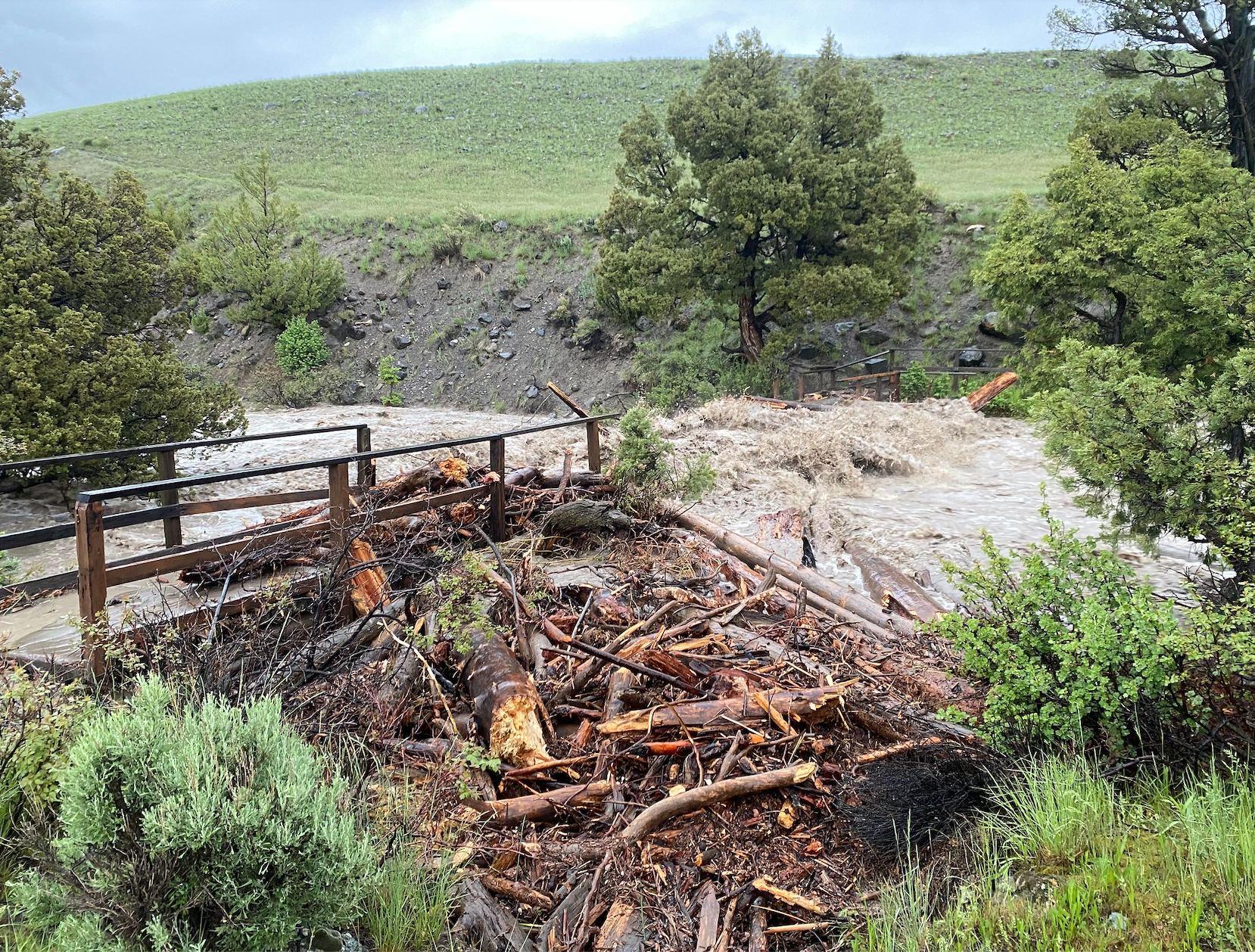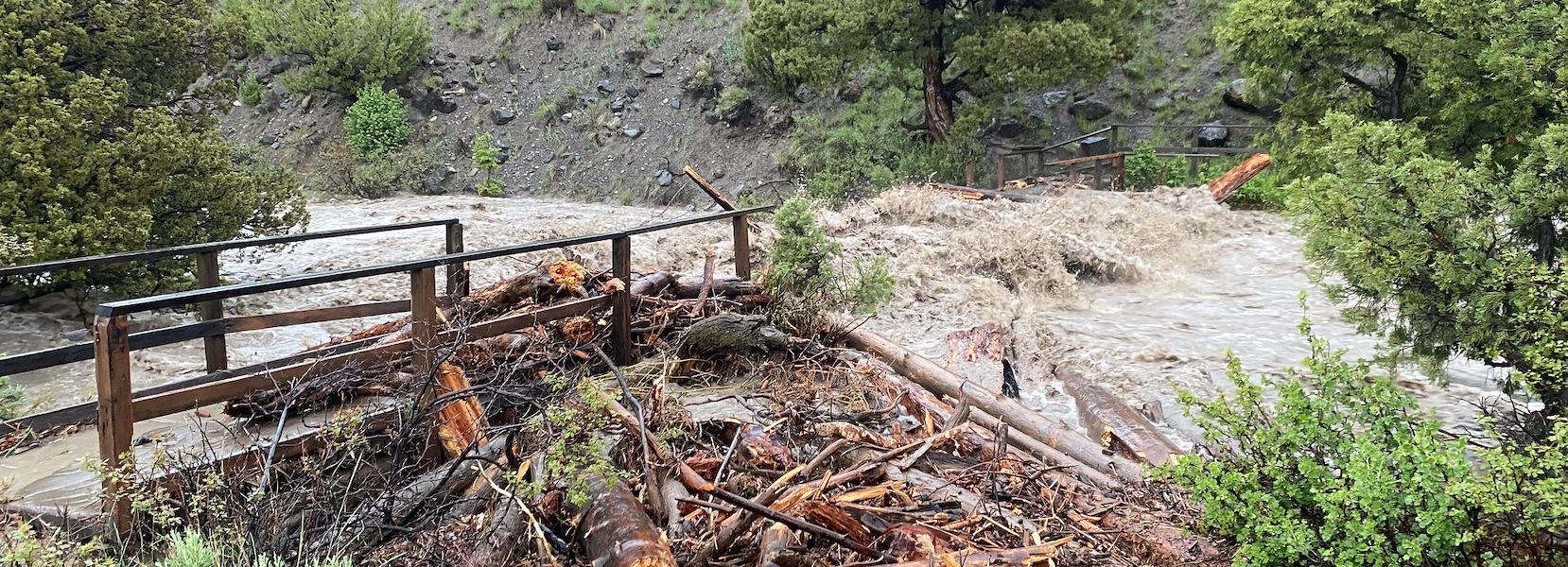
By Mark Davis
Powell Tribune
Via- Wyoming News Exchange
POWELL — When Cam Sholly first arrived at Yellowstone National Park in 2018 to take over as superintendent, he immediately started discussing his core priorities.
They included big ticket issues like improving employee housing and business practices, strengthening the ecosystem and heritage resources, investing in infrastructure, building coalitions and partnerships and delivering a world-class visitor experience.
He had good excuses for those priorities to take a back seat with the major distractions of the COVID-19 pandemic and devastating floods; or even more minor distractions like major infrastructure improvements, a dismembered foot, folks risking death and breaking laws while searching for treasure and the constant battle between overly curious tourists flaunting the rules and large, sometimes agitated animals.
But that’s not how Sholly operates.
“Despite the tremendous number of challenges we have faced over the past several years, we continue to make substantial progress in many areas important to the future of Yellowstone,” he said in the release of the 2023 State of the Park report.
Some of the core priorities are easier to wrap your head around than others. Bears, bison, eagles and wolves: They’re the kind of subjects that can get enthusiasts’ blood flowing. Volcanos: Now we’re getting somewhere. Business acumen? Not so much.
But that doesn’t mean it’s not as important as wildlife conservation. Far from it.
The excitement of working with charismatic species of wildlife in and around a hot caldera creating more than half the world’s active geysers requires attention to the details beyond the beautiful landscapes and wildlife.
In 2022, the National Park Service reported that 4.9 million visitors to Yellowstone National Park in 2021 spent over $630 million in communities near the park. That spending supported 8,736 jobs in the local area and had a cumulative benefit to the local economy of $834 million. That’s a sizable impact to gateway communities and the three-state region.
The 2021 report also showed a cumulative benefit to the U.S. economy from the National Park Service of $42.5 billion, of which Yellowstone was one of the highest grossing parks.
Combined with neighboring Grand Teton National Park, the tandem is a huge draw supporting increasingly important tourist dollars to Wyoming.
Yet, in 2022, the park only hosted 3,290,242 recreation visits, down a whopping 32% from 2021.
Park officials had hoped for another record year during their season-long 150th birthday party. But the park was forced to close public access on June 13 due to the flood. All park entrances closed, and visitors were evacuated over the next 24 hours.
While damage occurred in various locations around the park, the largest flooding impacts occurred in the northern parts of the park, the park reported. Multiple sections of roads were destroyed along with loss of wastewater infrastructure, loss of power to most of the park, and numerous mudslides and rockslides within the road corridors.
It wasn’t until June 22 that the East, South and West entrances opened on a limited entry basis. The North and Northeast entrances remained closed to visitor vehicle traffic through September.
Miraculously, the Northeast Entrance opened to regular visitor traffic on Oct. 15, and the North Entrance opened on Oct. 30 — only four months after the seemingly season-ending flood.
Despite the surprise catastrophe, Sholly’s team was immediately contacting stakeholders — initiating daily calls with gateway communities and communicating with over 1,000 business owners and residents during the first week alone.
Tina Hoebelheinrich, chief executive officer of the Cody Country Chamber of Commerce, was on the receiving end of those calls soon after the park was closed. She has been “very pleased” with Sholly’s leadership, having served both during the pandemic and the flood.
“He’s one of those rare breeds that is rock steady,” she said. “He’s a deep thinker and he wants to protect the gateway communities. He was a gateway kid and understands the importance of the park to the economy. I’m incredibly grateful for his leadership.”
Other major issues have taxed Sholly’s team.
It costs an additional $9.8 million to employ about the same number of FTE in 2022 as it did just a decade before. Actually, there were slightly more employees in 2013 than 2022, yet the park now hosts about 1 million more visits per year.
Park employees are also waging war against invasive species.
In 2021- 22, crews inventoried 18,440 acres of invasive plants, a 25% increase from the last reporting period. Yellowstone staff also conducted 2,975 watercraft inspections with 1,049 high-risk inspections and 210 decontaminations compared to 2021, which had 3,878 inspections with 134 high-risk inspections and one decontamination.
For the entire State of Wyoming’s inspection data, Yellowstone AIS staff conducted 30.6% of the decontaminations for the state.
The park made several pledges in the 2023 State of the Park Report.
Among those are to make Yellowstone one of the best places to work; strengthen the Yellowstone ecosystem and heritage resources; respond to climate change; improve sustainability efforts; ensure wildlife and ecosystem health is paramount; continue to provide a safe and enjoyable experience for visitors; continue to reduce the park’s deferred maintenance, and continue to build lasting and collaborative relationships with partners who are interested in protecting Yellowstone for the future.
“More than ever, we recognize the outstanding value of the team here in Yellowstone, the support we’ve received from the National Park Service, Department of the Interior, and other partners who have helped us achieve success in so many areas,” Sholly said.





